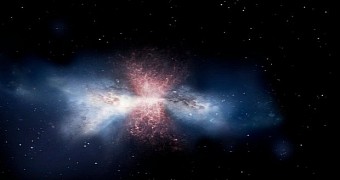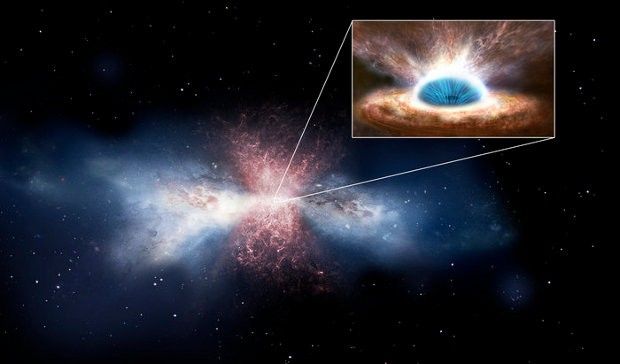Having the Herschel Space Observatory and the Suzaku X-ray satellite as their high-tech brothers-in-research, University of Maryland scientists and colleagues managed to document the behavior of a giant black hole at the center of a distant galaxy.
Specifically, the scientists studied how strong winds birthed by the black hole alter the galaxy's anatomy by pushing massive amounts of star-forming gas out of it at a rapid pace. The study is said to have provided the most detailed account of this process ever obtained.
Black holes are kind of, sort of like leaf blowers
The galaxy that the University of Maryland team of astronomers focused on goes by the name of IRAS F11119+3257 and is estimated to sit at a distance of about 2.6 billion light-years from our planet.
Like many of the other black holes populating the cosmos, the one that stands at the core of this distant galaxy is in the habit of feeding on its surroundings and releasing powerful winds in the process.
Data provided by the Herschel Space Observatory and the Suzaku X-ray satellite showed that, close to the black hole, these gusts move at speed of about 25% that of light and collect the gas equivalent of one solar mass on a yearly basis.
As they move away from the black hole that created them, the winds slow down but come to engulf ever-increasing amounts of gas. The result is that, each year, the gas equivalent of hundreds of solar masses is pushed out of the galaxy.
How black holes transform their home galaxies
In a report published earlier this week in the journal Nature, the scientists explain that, by pushing gas out of IRAS F11119+3257, the black hole they studied is essentially pulling the plug on the galaxy's ability to create new stars.
Mind you, it has long been argued that some black holes have this effect on their host galaxies. The thing is that, up until this University of Maryland study, the process was never before documented from beginning to end in such detail.
Thus, previous investigations either detected strong winds in the proximity of black holes or recorded massive outflows of star-forming gas from galaxies. A complete view of the winds creating the gas outflows, however, was yet to be obtained.
“This is the first galaxy in which we can see both the wind from the active galactic nucleus and the large-scale outflow of molecular gas at the same time,” study lead author Francesco Tombesi commented on the importance of this study.

 14 DAY TRIAL //
14 DAY TRIAL // 

